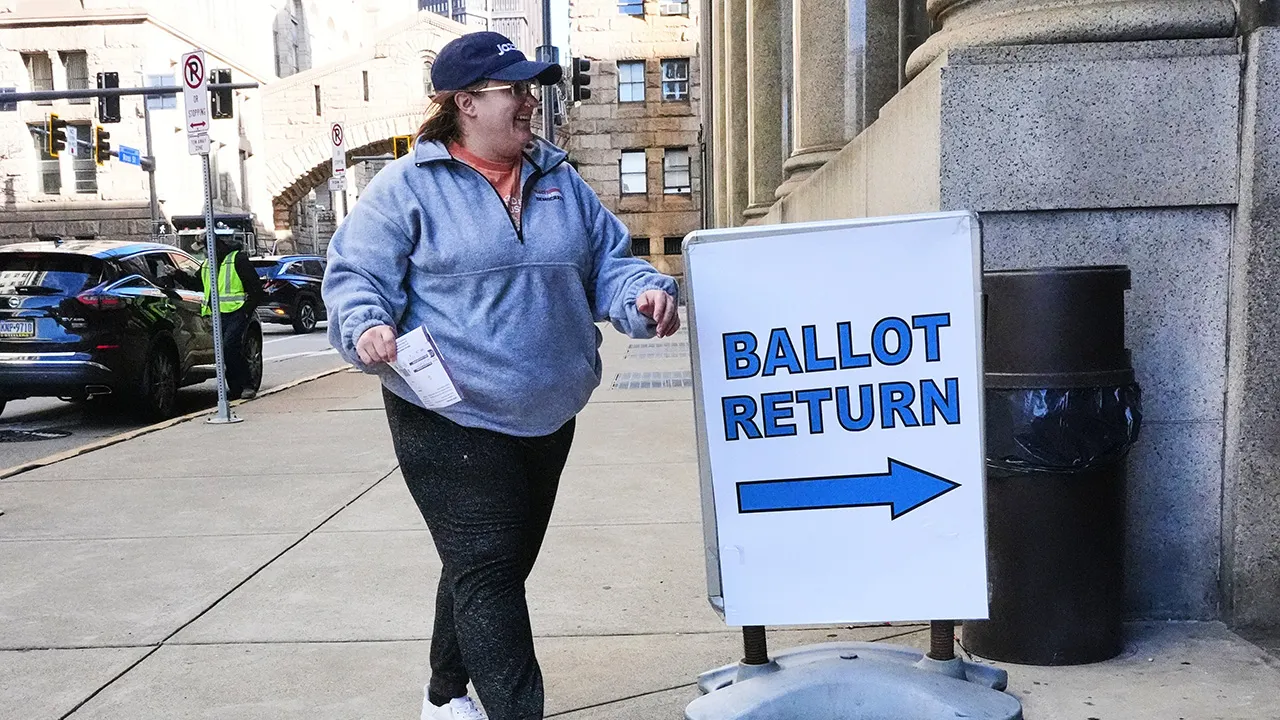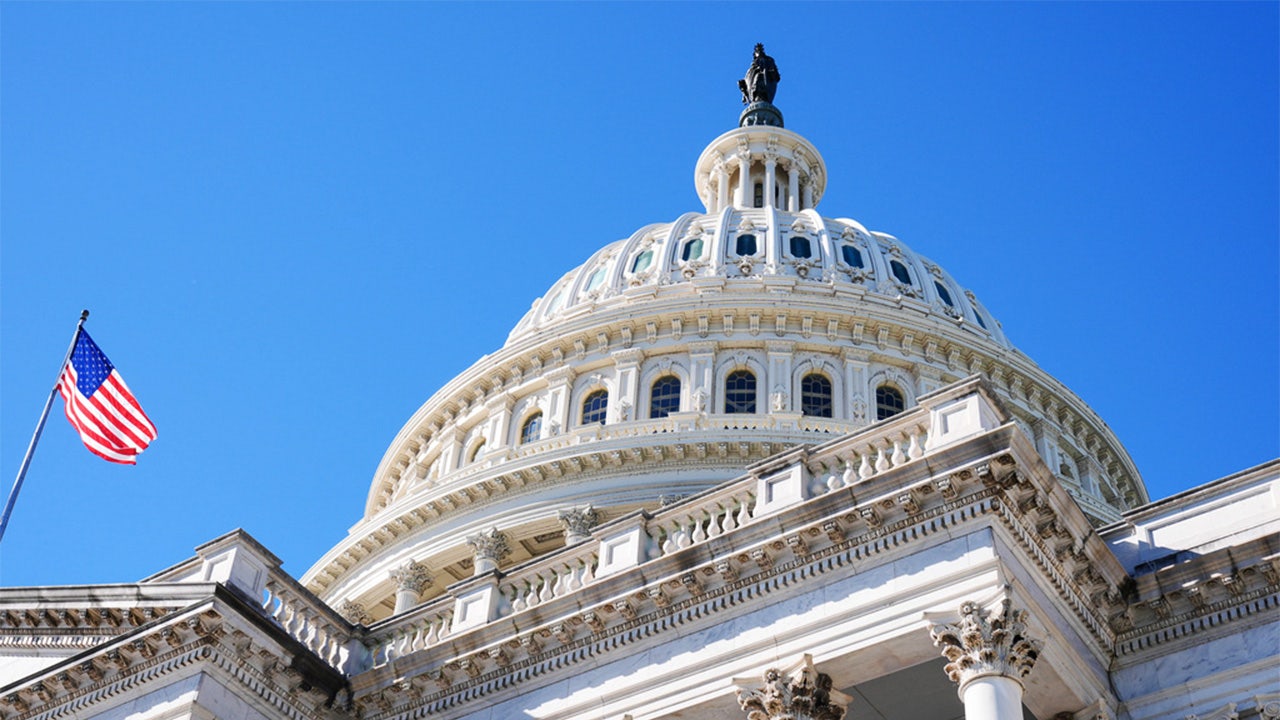Wyoming
Pokes Football: Best of Wyoming – No. 25

LARAMIE — It’s officially “series season.”
This summer, with the help of some longtime Wyoming football followers, we will count down the Top 25 homegrown products in program history.
As always, what these guys did in professional football doesn’t matter. This is all about production in Laramie. A couple of the guys on this final list may not have been born here, but they grew up in Wyoming and graduated from a in-state high school.
Once we put a bow on these selections, we’ll move on to other states like Colorado, Nebraska, Texas, etc. You get the picture.
So, let’s get this party started:
Cory Talich/ UW courtesy photo
No. 25 – Cory Talich
Linebacker, 1990-93, Pine Bluffs, Wyo.
Résumé in Laramie
Cory Talich was named second-team All-Western Athletic Conference during his sophomore season in Laramie back in 1991. That year the Pine Bluffs product finished with 64 tackles, including 11 for loss. He also forced two fumbles and picked off a pass. Talich racked up 167 tackles during his tenure in Laramie. All but five of those stops came during his final three seasons. He brought down the ball carrier 16 times behind the line of scrimmage and capped his career with two quarterback sacks and three interceptions. Talich’s brother Jim also played linebacker for the Cowboys from 1994-97. His son Nathaniel suited up for the UW basketball team in 2022-23.
About Pine Bluffs
Just a stone’s throw from the Nebraska border on Interstate-80, Pine Bluffs is home to roughly 1,100 residents. The town is located in Laramie County, just 42 miles east of Cheyenne.
(Cody Tucker and Jared Newland both work for Townsquare Media, which owns 7220sports.com. Kevin McKinney has been a color commentator of Cowboy football for five decades. Ryan Thorburn now works for the University of Wyoming in a sports information role after spending decades in the newspaper industry, most recently at the Casper Star-Tribune. Sally Ann Shurmur, the daughter of former UW football coach Fritz Shurmur, is also a veteran of the newspaper industry, working as a journalist, columnist at the CST for 43 years. She currently writes for Cowboy State Daily.)
University of Wyoming’s Top 50 Football Players
The rules are simple: What was the player’s impact while in Laramie? That means NFL stats, draft status or any other accolade earned outside of UW is irrelevant when it comes to this list.
This isn’t a one-man job. This task called for a panel of experts. Joining 7220’s Cody Tucker are Robert Gagliardi, Jared Newland, Ryan Thorburn, and Kevin McKinney.
We all compiled our own list of 50 and let computer averages do the work. Think BCS — only we hope this catalog is fairer.
Gallery Credit: 7220Sports.com
– University of Wyoming’s Top 50 Football Players

Wyoming
Wyoming Public Schools approve $30M bond proposal, sinking fund millage renewal
WYOMING, MI — Voters on Tuesday, Nov. 4, approved both a $30 million bond proposal and a 10-year sinking fund millage renewal for Wyoming Public Schools.
The bond passed with 813 votes (59.91%) to 544 votes (40.09%), while the millage passed with 835 votes (61.62%) to 520 votes (38.38%), according to the unofficial vote totals from the Kent County Clerk’s Office.
The 2025 bond proposal totals $29.75 million to complete projects identified in the WPS Master Facilities Plan, including new learning spaces for students, air conditioning and secure entrances in remaining buildings, updates to the elementary media center, and a gym addition at Gladiola Elementary School.
The previous bond requests came at no tax increase to residents. The 2025 request will decrease taxes from the current rate of 5.65 mills to 5.50 mills in 2026, WPS Superintendent Craig Hoekstra said.
For a home with a $100,000 taxable value, that equals $550 a year, according to WPS.
The millage proposal was to renew the school system’s current sinking fund millage of .4595 mills — less than 46 cents on each $1,000 of taxable property value — for 2026 through 2035.
For a home with a $100,000 taxable value, that amounts to $45.95 in taxes per year. The millage was expected to raise approximately $630,427 in the first year for repairs, safety, technology replacements and buses, according to WPS.
All election results are unofficial until verified by the Board of County Canvassers.
If you purchase a product or register for an account through a link on our site, we may receive compensation. By using this site, you consent to our User Agreement and agree that your clicks, interactions, and personal information may be collected, recorded, and/or stored by us and social media and other third-party partners in accordance with our Privacy Policy.
Wyoming
Wyoming lawmakers advance election reform bills despite feasibility warnings

CHEYENNE, Wyo. — The Wyoming Legislature’s Joint Corporations, Elections & Political Subdivisions Committee voted Monday to sponsor a sweeping package of six election reform bills that boost manual ballot counting and expand poll watcher authority.
The bills advanced despite stern warnings from county clerks that the changes could prove logistically impossible to implement by the 2026 election cycle. Critics argued the package restricts ballot access and competition for independent candidates.
The committee’s action sponsors six working draft measures that focus on shifting the election process toward increased hand counting of ballots and enhanced oversight.
Lawmakers first approved “26LSO-0043, Random hand count audits of election results,” 11–2. The bill requires county clerks to conduct a hand count audit in one randomly selected precinct after primary and general elections to compare manual results to electronic tabulation.
The committee also voted 11–2 to sponsor “26LSO-0044, Elections-hand counting for recounts,” which mandates automatic hand recounts in close statewide and legislative races. Rep. Mike Yin, D-Teton County, and Sen. Cole Case, R-Lander, cast the dissenting votes on both measures.
Malcolm Ervin, Platte County clerk and president of the County Clerks Association, urged the committee to consider a later effective date for the changes. The bill requires the Secretary of State to adopt rules for the audits by July 1, 2026.
“I hate to be the one that comes up here and says I worry that this as written can’t be implemented effectively in ’26, but that is the reality,” Ervin said, adding the state should bear the cost of the new recount method.
A speaker from Sheridan County, Elena Campbell, supported transparency but sought more expansive audits, saying: “If the mechanics of voting are shrouded in complexity or lack transparency, trust in the electoral outcome diminishes, eroding the foundation of our very republic.”
The contested “26LSO-0045, Poll watchers-polling stations observation” passed 9–4. The bill expands poll watcher authority, clarifying they can observe all election procedures, including setup and shutdown. It allows one poll watcher per political party for each precinct served at multi-precinct locations.
Sen. Bill Landen, R-Natrona County, was strongly opposed, calling the bill excessive.
“To me, this is the bottom dweller of the whole bunch,” he said. “We’ve had testimony that, in many of the circumstances, we don’t even have venues that will hold all of these people. This is a very comprehensive bill that asks an awful lot out of our county clerks. … I don’t think it’s needed. I think it’s overkill and it does nothing for the integrity of elections in my view.”
Fremont County Clerk Julie Freese detailed the potential logistical burdens, saying her 32 precincts “could mean 96 poll watchers. This is more than my largest vote center has judges for.”
Rep. Steve Johnson, R-Laramie County, supported the measure.
“We need to provide for purity of these elections. We need to let the people know that these elections are accurate and competent,” he said.
The committee also voted 9–3 to sponsor “26LSO-0048, Elections-acceptable identification revisions,” requiring all acceptable ID for in-person voting to include a photograph. It repeals Medicare/Medicaid and public school/university IDs as acceptable forms. Secretary of State Chuck Gray said the goal was to achieve “true voter ID” to prevent voter impersonation.
Richard Garrett of AARP Wyoming asked the committee to consider alternatives for elderly voters who might struggle to get photo IDs. Garrett offered several proposals, including one modeled after Arkansas law.
“In Arkansas, we actually find that nursing home residents without a photo ID are allowed to vote at the polling place with documentation of nursing home residency provided by a long-term care facility administrator, attesting the voter is a resident of the facility,” he said. “Nebraska also allows for the same provision.”
The bill aimed at independent candidate requirements, “26LSO-0046, Elections-independent candidate requirements,” also passed 10–3, increasing the required number of signatures to 5% for district races and aligning the filing deadline with partisan candidates. Landen, Yin and Case voted no.
“What this does is close the door on independent candidates, and ultimately the question is what are we afraid of?” Yin said. “This is literally restricting access to the general election ballot in a way that kind of just says that we’re afraid of competition. … Out of all of the bills that we have so far, this is the most rankling one just because it says we’re scared, and I think it makes it very apparent that we’re scared as a legislature.”
The final bill sponsored was “26LSO-0047, Elections-voting machine and voting system tests,” which passed 11–1, with Yin again dissenting. The bill clarifies testing procedures and removes the previous presumption that voting machines were properly prepared.
The committee tabled “26LSO-0049, Election transparency,” an omnibus bill that would have mandated paper ballots and lowered the period for early in-person absentee voting.
The body previously supported “26LSO-0041, Ballot drop boxes-prohibition” during its August meeting. Under that proposed change, marked absentee ballots must be mailed or hand delivered to the clerk, explicitly banning the use of receptacles by officials.
Related
Wyoming
Laramie County gas drops 4 cents, now Wyoming’s second cheapest

CHEYENNE, Wyo. — A 4-cent drop made Laramie County’s gas price the second cheapest in Wyoming this week.
The nation’s average price of gasoline also fell 1.4 cents over the last week, standing at $2.99 per gallon, according to GasBuddy data compiled from more than 12 million individual price reports. The national average is down 14.8 cents from a month ago and 6.6 cents from a year ago.
The national average price of diesel has increased 2.5 cents in the last week to stand at $3.663 per gallon.
AAA reports a national average price of $3.03, down 2 cents from last week. Wyoming’s state average fell 1 cent to $2.92, AAA said.
“The national average once again briefly dipped below the $3 per gallon mark, but the drop will be short-lived,” said Patrick De Haan, head of petroleum analysis at GasBuddy. “Gas prices are likely to rebound soon in the Great Lakes states due to ongoing refinery challenges, while a new snag at a California refinery may slow the pace of declines on the West Coast. To top it off, OPEC+ announced another boost to oil production for December over the weekend, though they also signaled a pause in further increases from January through March.
“For now, expect the national average to hover in the low-$3 range, potentially drifting lower once refinery issues are resolved.”
Laramie County’s average price of $2.68 is Wyoming’s second lowest, up two spots from last week. The cheapest fuel in the county on Monday is $2.61 at Sam’s Club, 1948 Dell Range Blvd., followed by $2.63 at Maverik, 140 Gardenia Drive, and Loaf ‘N Jug, 534 Vandehei Ave., according to GasBuddy reports.
Wyoming’s cheapest fuel for the 11th straight week is in Natrona County, which has an average price of $2.56, down 9 cents from last week. Converse County toppled Campbell and Albany counties to offer the state’s third-cheapest average at $2.70.
Also included in GasBuddy’s report:
OIL MARKET DYNAMICS
Over the last week, oil markets have been a bit more tame, balancing new sanctions on Russian oil exports with OPEC’s weekend decision to again raise oil production for the month of December, keeping oil prices in check. In early trade, WTI crude oil was down 3 cents to $60.95 per barrel, a slight drop from last Monday’s $61.53 per barrel fetch. Brent crude oil was also slightly lower in early trade, down 4 cents to $64.73, down from $65.96 last Monday. “Oil prices have moved nearly sideways in recent days. While there is rising skepticism that the latest sanctions on Russian oil companies remove substantial oil supply from the market, large US oil inventory draws last week kept prices supported,” added Giovanni Staunovo, UBS commodities analyst, in an e-mail. “The OPEC+ decision to pause their supply increases during the seasonal weaker Q1 demand period is also giving moderate support.”
OIL AND REFINED PRODUCT SUPPLIES
The EIA’s Weekly Petroleum Status Report for the week ending October 24, 2025, showed U.S. oil inventories fell by 6.9 million barrels, and are about 6% below the seasonal average for this time of year, while the SPR rose 500,000 barrels to 409.1 million. Gasoline inventories fell by 5.9 million barrels and are about 3% below the five-year seasonal average, while distillate inventories fell by 3.4 million barrels and are about 8% below the five-year seasonal average. Refinery utilization fell 2.0 percentage points to 86.6%, while implied gasoline demand, EIA’s proxy for retail demand, rose 470,000 bpd to 8.924 million barrels per day.
GAS PRICE TRENDS
The most common U.S. gas price encountered by motorists stood at $2.99 per gallon, up 10 cents from last week, followed by $2.89, $2.79, $2.69, and $2.59, rounding out the top five most common prices.
The median U.S. gas price is $2.89 per gallon, up 2 cents from last week and about 10 cents lower than the national average.
The top 10% of stations in the country average $4.41 per gallon, while the bottom 10% average $2.37 per gallon.
The states with the lowest average prices: Oklahoma ($2.48), Texas ($2.48), and Louisiana ($2.53).
The states with the highest average prices: California ($4.61), Hawaii ($4.43), and Washington ($4.23).
Biggest weekly changes: Indiana (-13.3¢), Texas (-10.0¢), Michigan (-9.8¢), Washington (-9.0¢), Iowa (-8.8¢)
DIESEL PRICE TRENDS
The most common U.S. diesel price stood at $3.69 per gallon, up 10 cents from last week, followed by $3.49, $3.79, $3.59, and $3.39, rounding out the top five most common prices.
The median U.S. diesel price is $3.59 per gallon, up 4 cents from last week and about 7 cents lower than the national average.
Diesel prices at the top 10% of stations in the country average $4.61 per gallon, while the bottom 10% average $3.04 per gallon.
The states with the lowest average diesel prices: Texas ($3.15), Louisiana ($3.23), and Mississippi ($3.24).
The states with the highest average diesel prices: Hawaii ($5.21), California ($5.10), and Washington ($4.94).
Biggest weekly changes: New Jersey (+14.6¢), Florida (+10.4¢), Oklahoma (+7.7¢), Wyoming (+6.9¢), Nebraska (-6.8¢)
Related
-

 Milwaukee, WI1 week ago
Milwaukee, WI1 week agoLongtime anchor Shannon Sims is leaving Milwaukee’s WTMJ-TV (Channel 4)
-

 News1 week ago
News1 week agoWith food stamps set to dry up Nov. 1, SNAP recipients say they fear what’s next
-

 Alabama1 week ago
Alabama1 week agoHow did former Alabama basketball star Mark Sears do in NBA debut with Milwaukee Bucks?
-

 Culture1 week ago
Culture1 week agoVideo: Tyler Mitchell Breaks Down Three Photos From His New Book
-

 News1 week ago
News1 week ago1 dead, 6 injured in shooting at Lincoln University homecoming festivities
-

 Austin, TX1 week ago
Austin, TX1 week agoDia De Los Muertos Austin: Parades, Altars & Events
-

 Culture6 days ago
Culture6 days agoVideo: Dissecting Three Stephen King Adaptations
-

 Seattle, WA3 days ago
Seattle, WA3 days agoESPN scoop adds another intriguing name to Seahawks chatter before NFL trade deadline




















